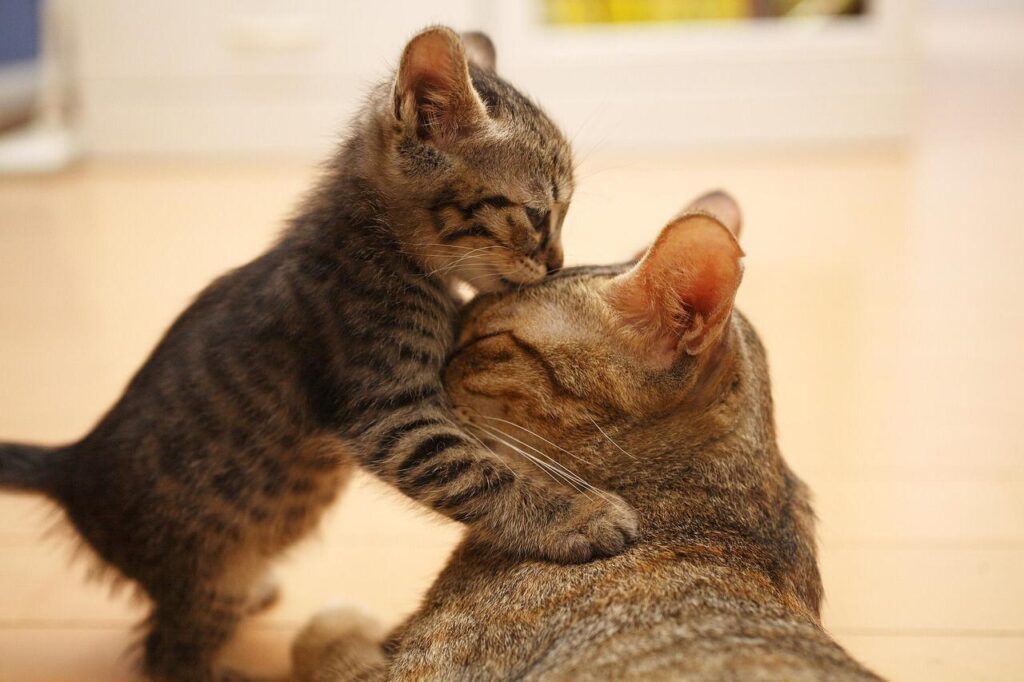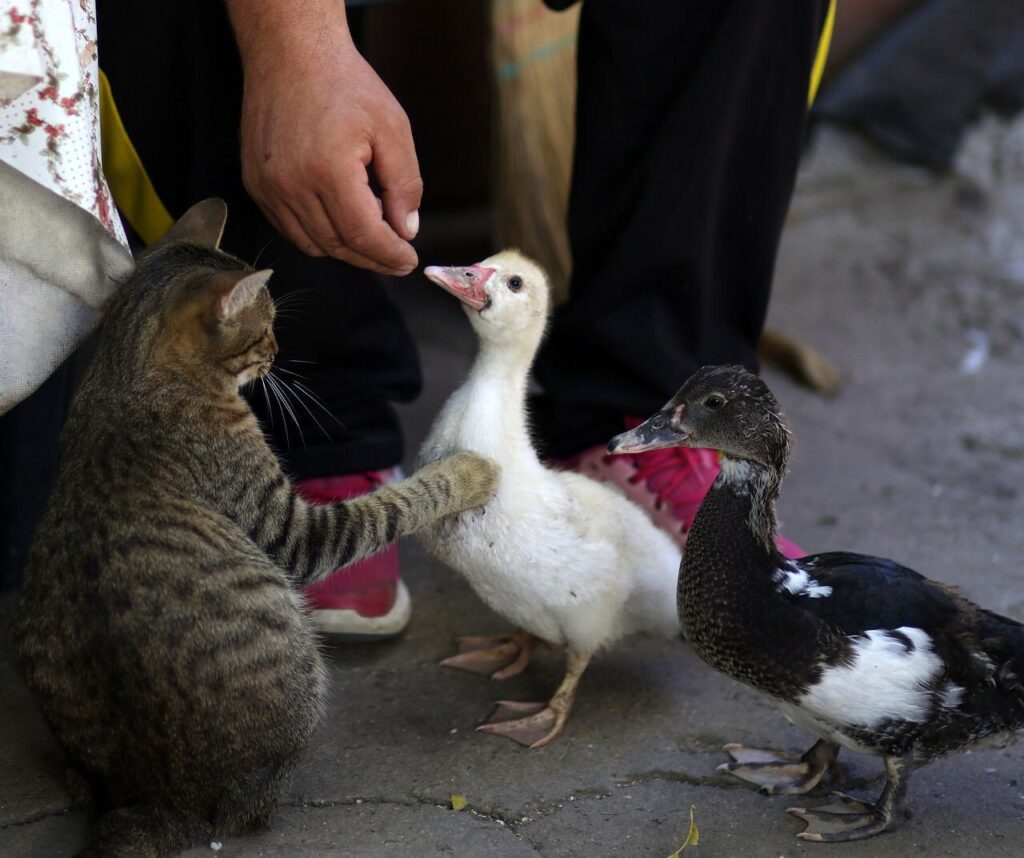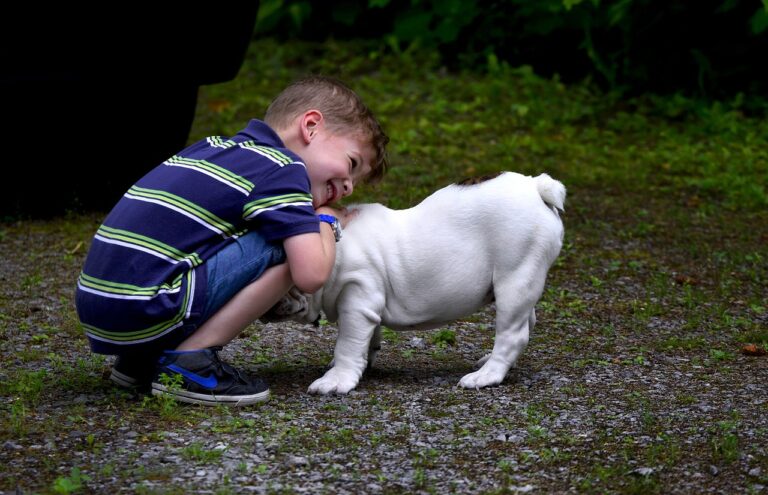Unlocking the Language of Animals: What Are They Trying to Tell Us?

Have you ever looked into the eyes of an animal and felt a connection, as if they were trying to tell you something? While animals may not speak our language, they communicate in their own unique ways. From the wag of a dog’s tail to the chirp of a bird, animals express themselves through a variety of signals and behaviors. But what are they really trying to convey?
And do they feel emotions like love and compassion, just like us?
At the heart of understanding animal communication lies the recognition that animals, like humans, are sentient beings capable of experiencing a wide range of emotions. Research has shown that many animals, including mammals, birds, and even some reptiles and fish, exhibit behaviors that suggest they feel emotions such as joy, fear, sadness, and yes, even love and compassion.
I think they are communicating these kind of ideas,

This mother cat and offspring little cat communicate their love and affection for each other . Yes, One of the most compelling examples of animal emotions is the bond between a mother and her offspring.
Across species, mothers display nurturing behaviors towards their young, ensuring their safety and well-being. Whether it’s a lioness fiercely protecting her cubs or a mother bird tirelessly feeding her chicks, these actions speak to a deep sense of care and affection just like this mother cat and little cat.

But it’s not just within their own species that animals exhibit signs of empathy and compassion. There are numerous accounts of animals forming unlikely friendships with individuals of different species.
The above picture depicts how little cat show his love for birds…From a dog and a duck frolicking together to a cat nursing abandoned puppies, these inter-species relationships challenge our understanding of animal behavior and hint at the complexity of their emotional lives.

Photo credits – Pixabay
Take, for example, the story of Koko the gorilla, who captured the hearts of millions with her ability to communicate using sign language. Koko formed a special bond with her caregiver, Dr. Francine Patterson, and demonstrated a remarkable understanding of language and emotion.
Through sign language, Koko was able to express her feelings, desires, and even make jokes, offering a glimpse into the rich inner world of non-human primates.
But communication goes beyond language. Animals rely on a diverse array of signals and cues to convey their intentions and emotions. From vocalizations and body language to scent marking and facial expressions, each species has its own unique way of communicating with the world around them.

For example, dogs communicate primarily through body language, using cues such as tail wagging, ear position, and facial expressions to convey their mood and intentions.
A wagging tail can signal excitement or happiness, while a tucked tail may indicate fear or anxiety. By learning to interpret these signals, we can better understand our canine companions and strengthen our bond with them.
Here above picture flattened ears of dog might indicate their fear or aggression , paying attention to these signals helps us understanding their needs and feelings better.

Photo credits – Pixabay
Similarly, birds use a combination of vocalizations and visual displays to communicate with each other and with other species. Whether it’s the melodic song of a robin marking its territory or the elaborate courtship dance of a peacock, birds employ a diverse array of behaviors to attract mates, defend territory, and warn of danger.
But perhaps one of the most fascinating forms of animal communication is the use of scent. Many animals, including mammals like dogs and cats, rely heavily on their sense of smell to navigate their environment and communicate with others. Scent marking, for example, is a common behavior among many species, serving as a way to establish territory, attract mates, and communicate social status.
In recent years, scientists have made significant strides in understanding animal communication, thanks in part to advances in technology and research methods. High-speed cameras, GPS tracking devices, and bioacoustic sensors have allowed researchers to observe animals in their natural habitats and gather data on their behavior and vocalizations.
But while we’ve made great progress in decoding the language of animals, there is still much we have yet to learn. Each species has its own unique communication system, shaped by evolutionary pressures and environmental factors. By studying these systems and learning to listen to the voices of the animals around us, we can gain a deeper appreciation for the rich tapestry of life on Earth.
Here are the summery of 5 way of animal ‘s communication,
1. Body Language: The Silent Speech
Animals, like humans, use body language to convey messages. For example, a dog wagging its tail usually signifies happiness or excitement, while flattened ears might indicate fear or aggression. Similarly, a cat’s purring can express contentment or serve as a soothing mechanism.
Observing an animal’s body language can provide valuable insights into its emotions and intentions. Whether it’s a horse’s ears flicking back or a rabbit thumping its hind legs, paying attention to these signals helps us understand their needs and feelings better.
2. Vocalizations: From Roars to Whispers
While some animals rely primarily on body language, others communicate through vocalizations. Birds chirp, whales sing, and lions roar. Each species has its own repertoire of sounds, each with its own meaning.
For instance, birds use calls to warn of danger, attract mates, or establish territory. Dolphins communicate through a complex system of clicks and whistles, while elephants produce deep rumbles that can travel long distances, conveying messages across their herds.
3. Chemical Signals: Scent Speak
In addition to body language and vocalizations, animals use chemical signals to communicate. Scent marking, for example, is common among mammals like wolves, who use urine to mark their territory and convey information about their presence to others.
Similarly, pheromones play a vital role in attracting mates and signaling reproductive readiness. Ants leave pheromone trails to guide others to food sources, while bees use them to communicate the location of nectar-rich flowers.
4. Context Matters: Understanding the Situation
While deciphering animal communication is intriguing, it’s essential to consider the context in which these signals occur. A dog baring its teeth may signal aggression, but in the context of play, it’s likely just a friendly gesture.
Likewise, a cat’s hiss might indicate fear or irritation, while a snake’s rattle serves as a warning to stay away. Understanding the broader context helps prevent misinterpretation and fosters better communication between humans and animals.
5. Bridging the Gap: Building Relationships
As humans, we share a deep connection with animals, forged through centuries of companionship and cooperation. By learning to understand their language, we can strengthen these bonds and provide better care for our animal companions.
Simple gestures like responding to a cat’s meow or tossing a ball for a dog to fetch demonstrate our willingness to engage and communicate with them. Through patience, observation, and empathy, we can unlock the rich tapestry of animal communication and forge deeper, more meaningful relationships with the creatures that share our world.
In the end, the language of animals is a complex and beautiful symphony, filled with nuance and meaning.
Whether it’s the playful bark of a dog, the haunting call of a whale, or the intricate dance of a bee, each communication carries with it a story waiting to be told. And as we continue to unlock the secrets of animal communication, we may find that we are not so different from our fellow creatures after all. In the language of love and compassion, we are all connected.







THIS WAS A SUPERB READ!!!!!!! BLESS YOUR HEART FOR THIS